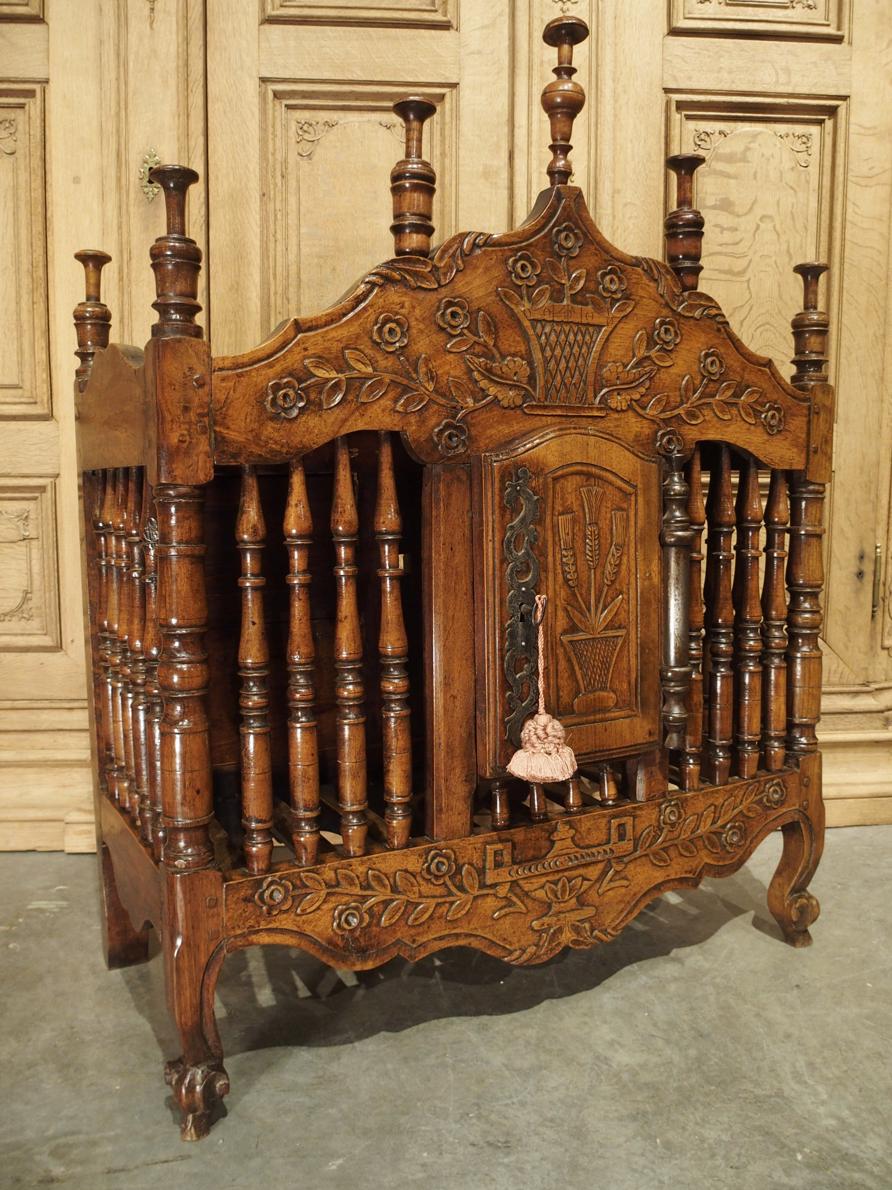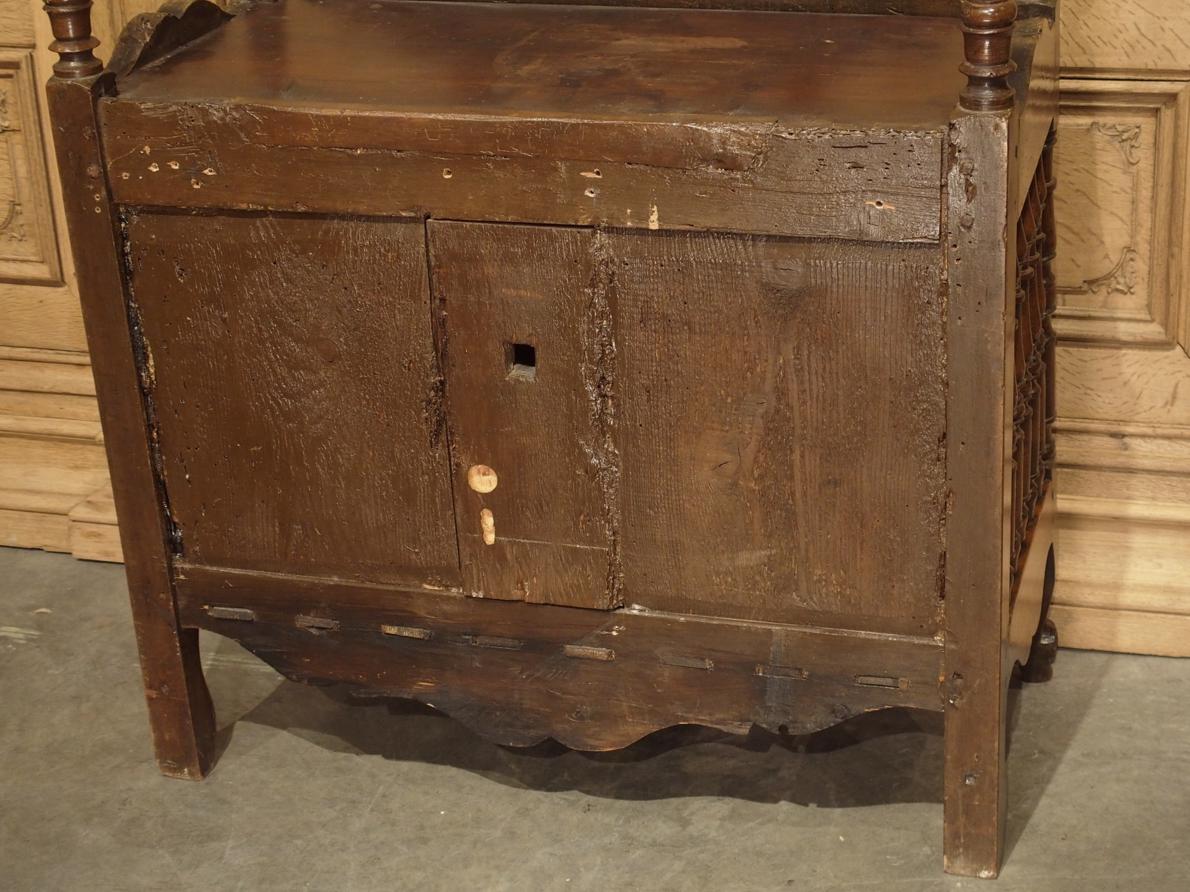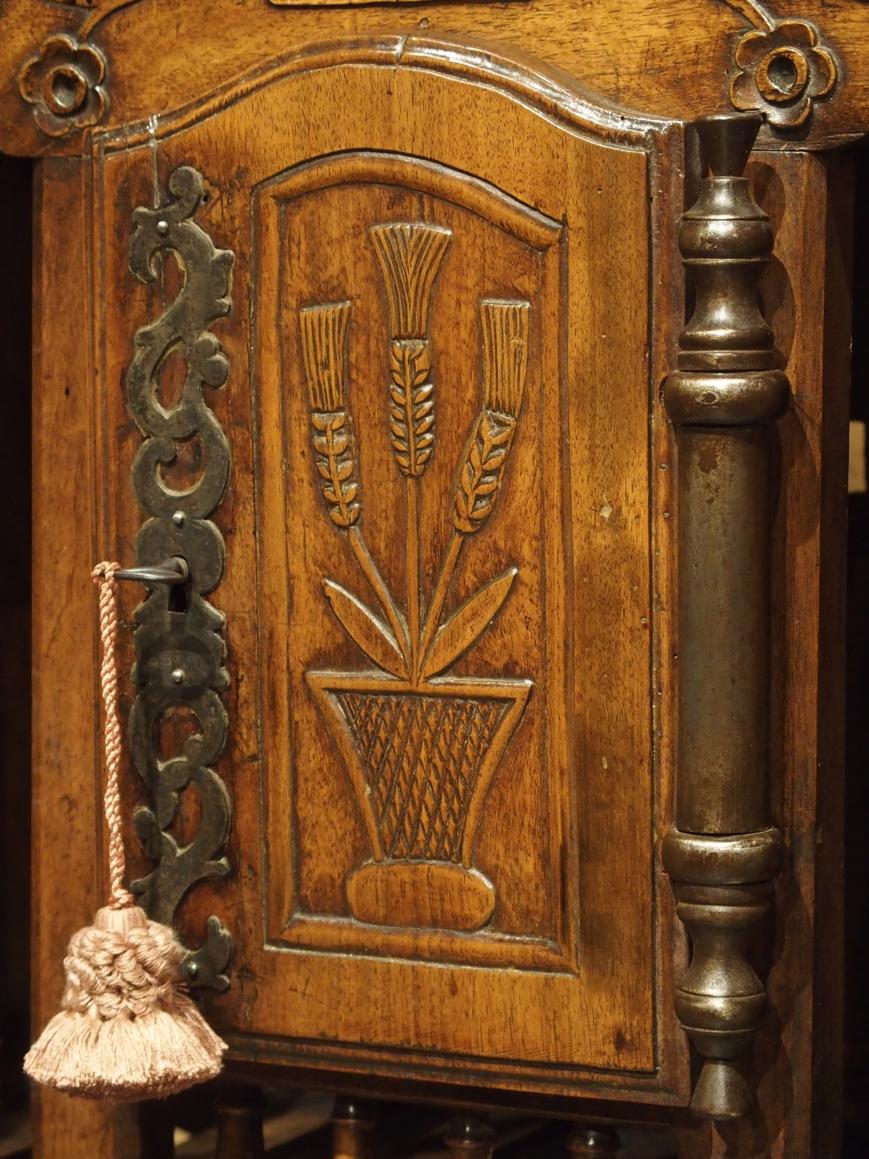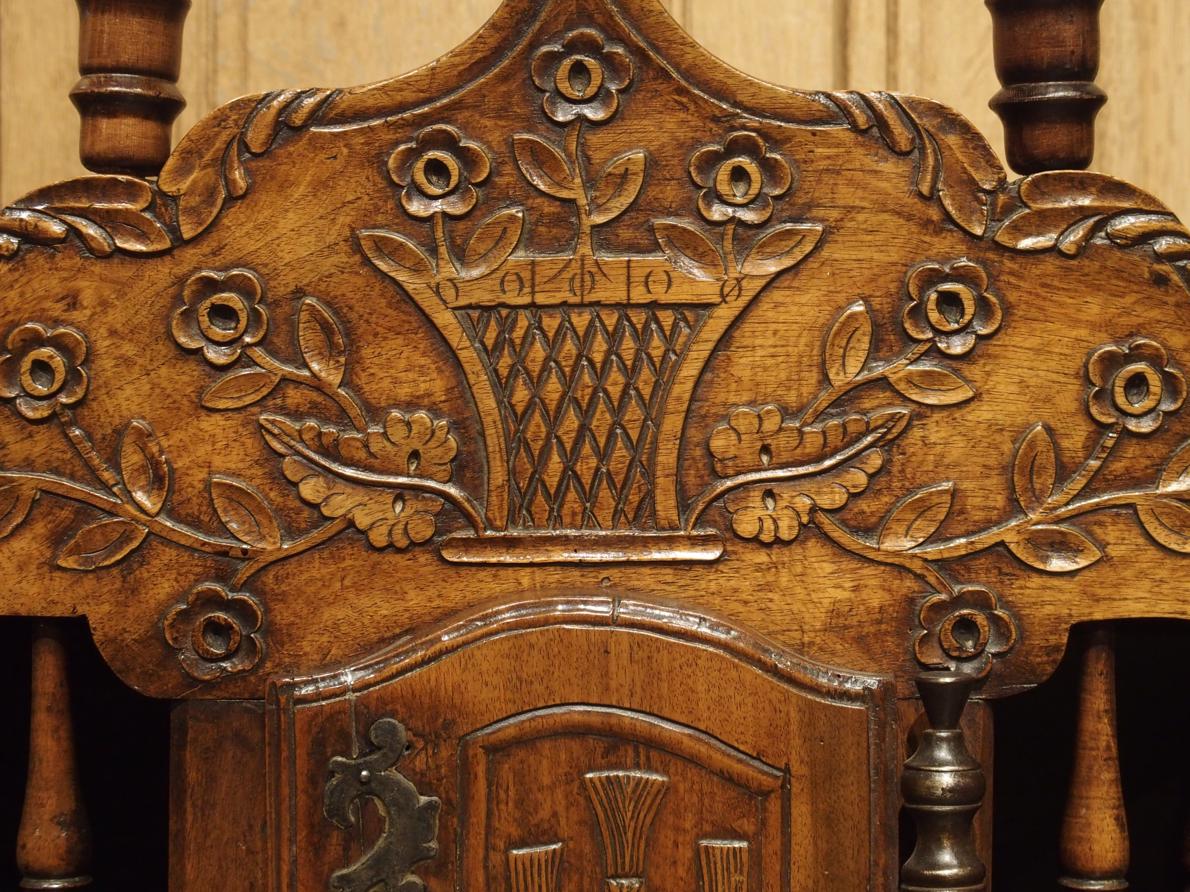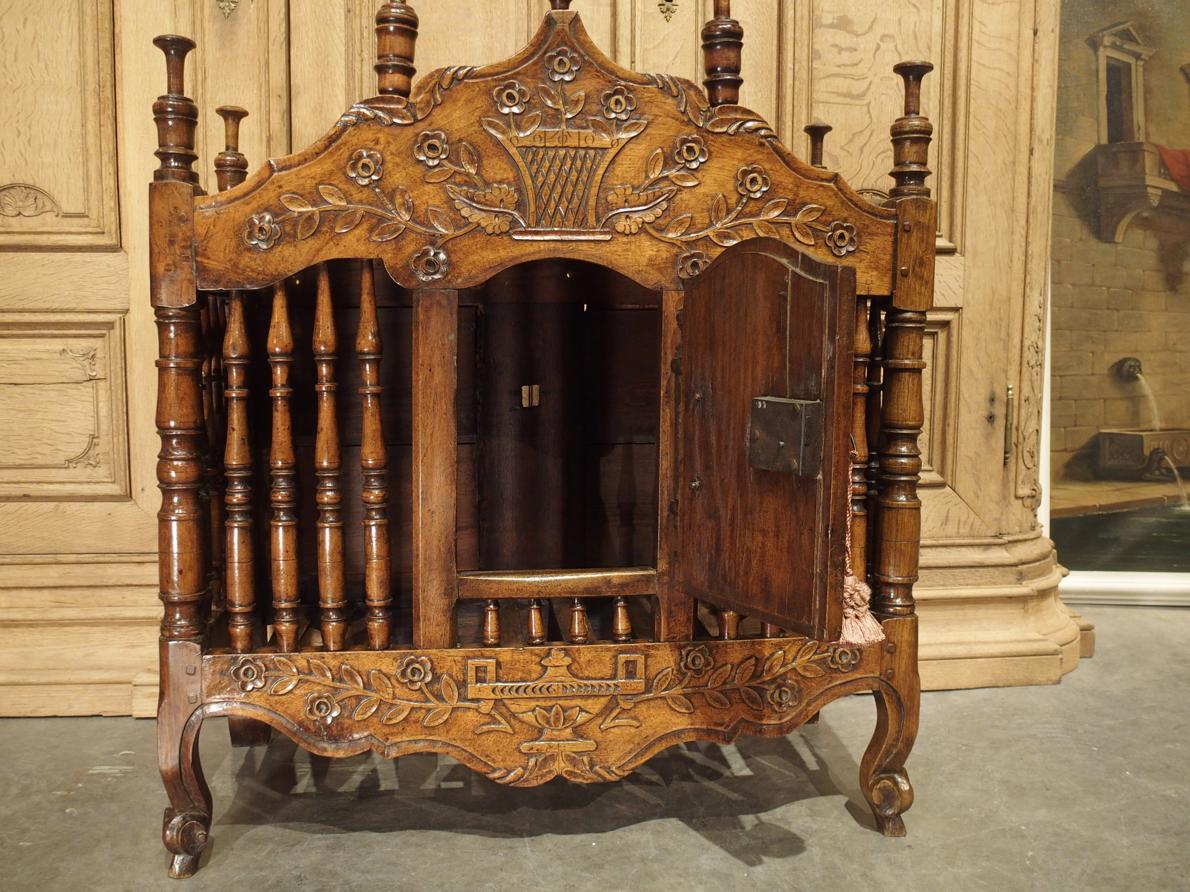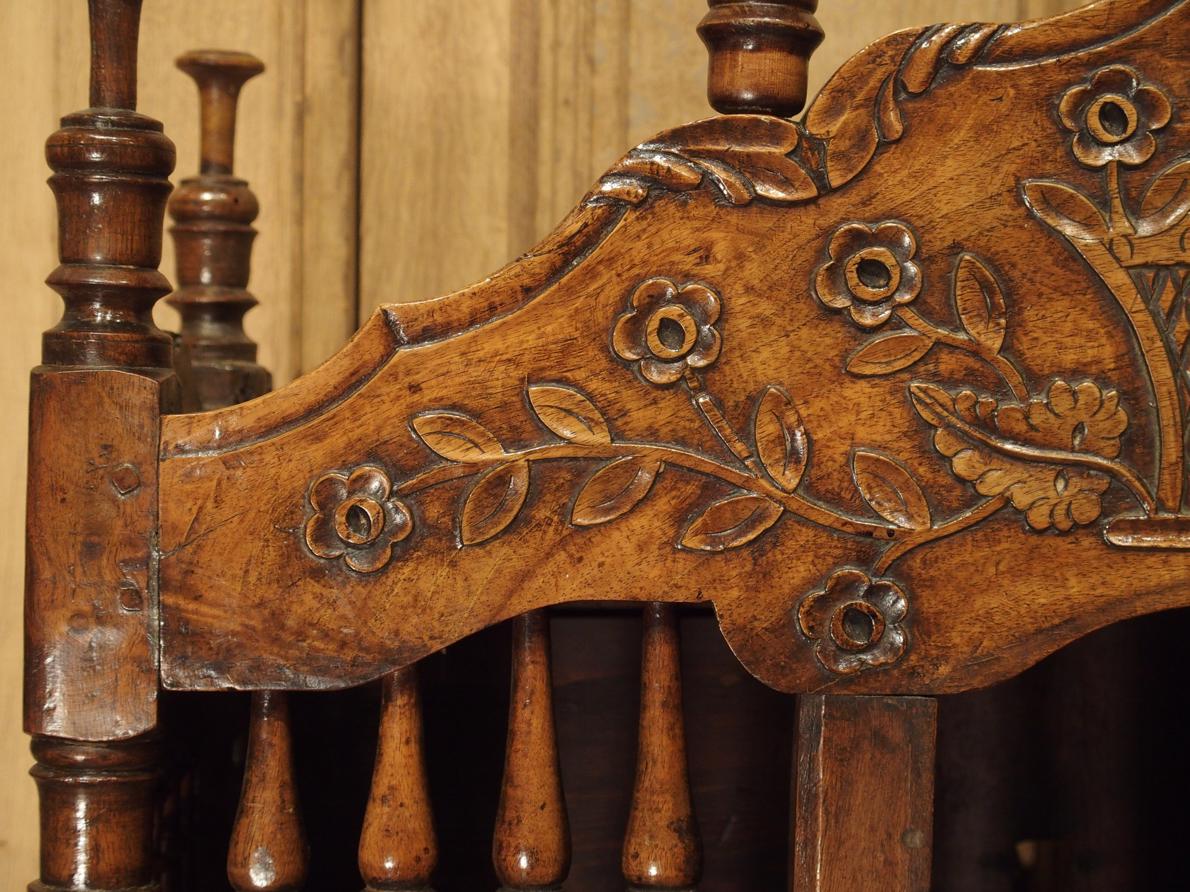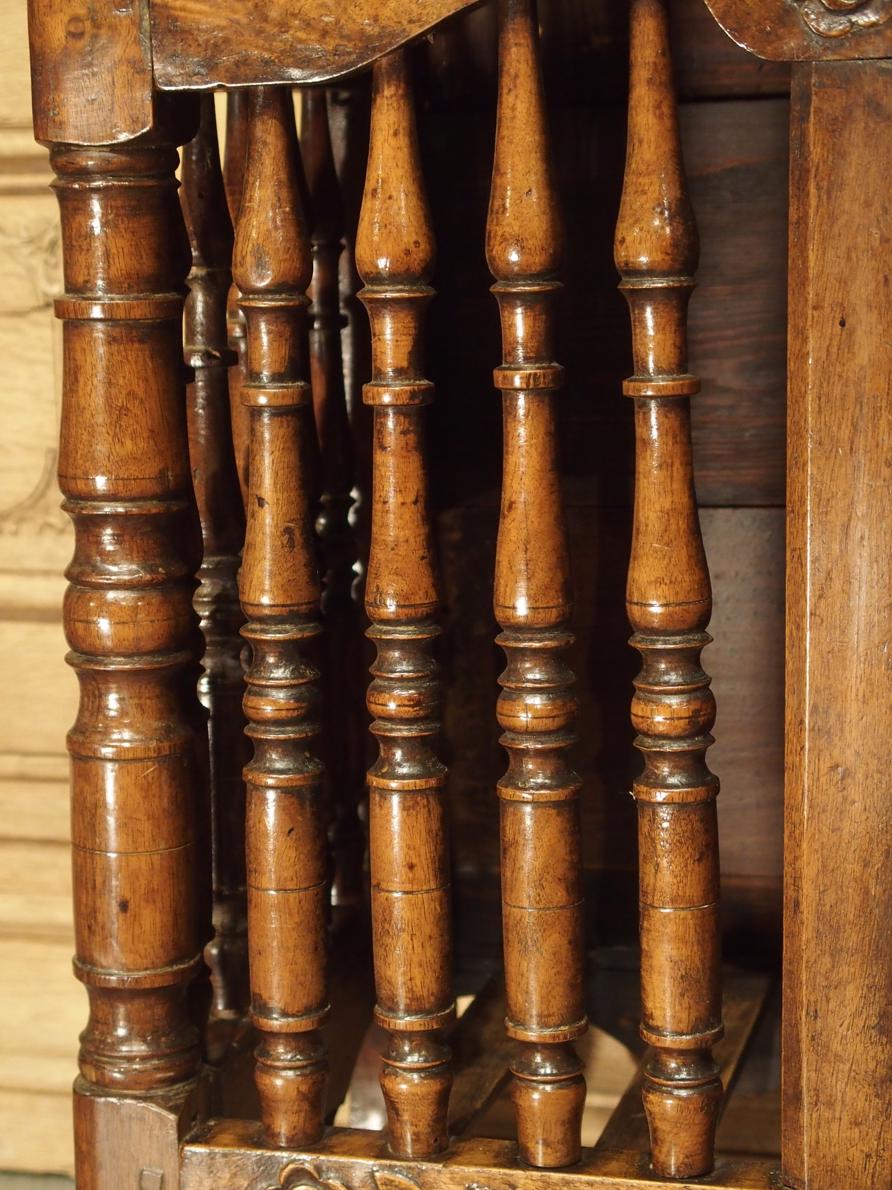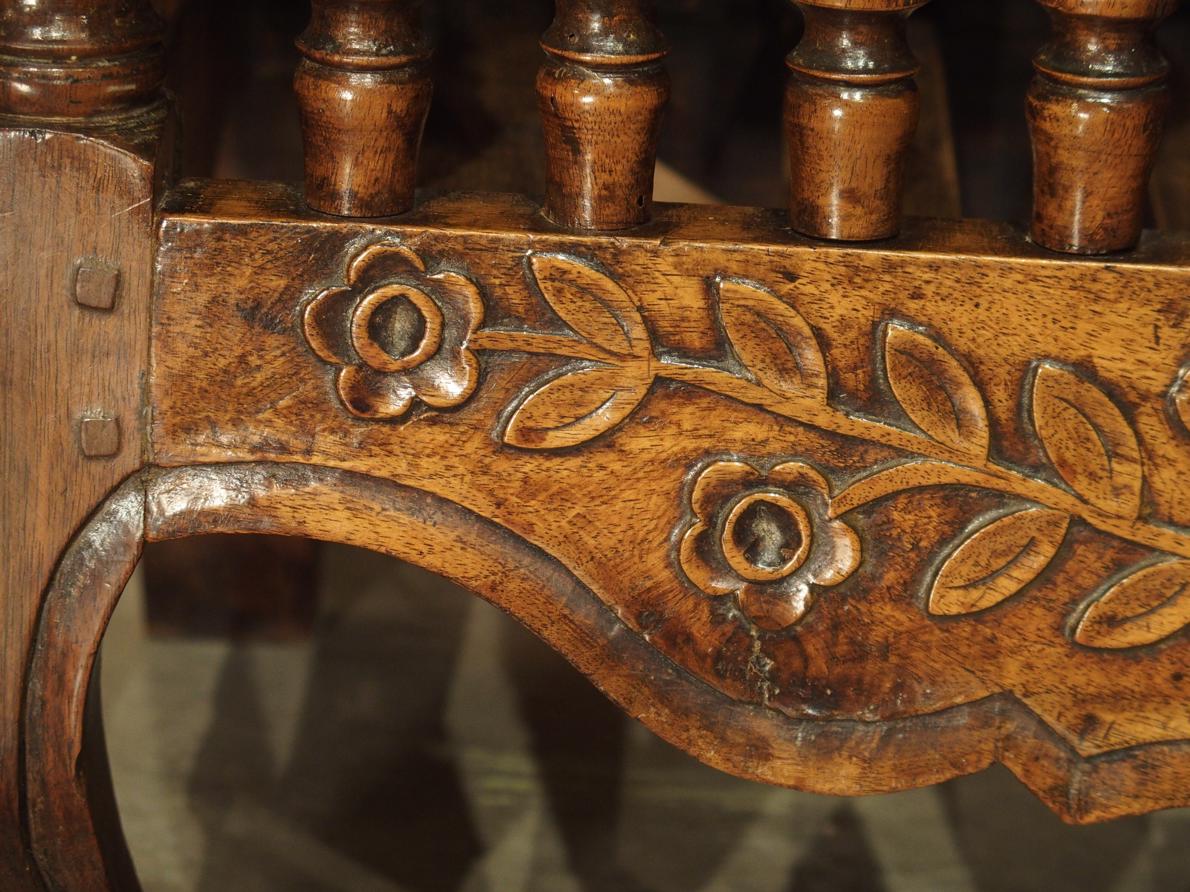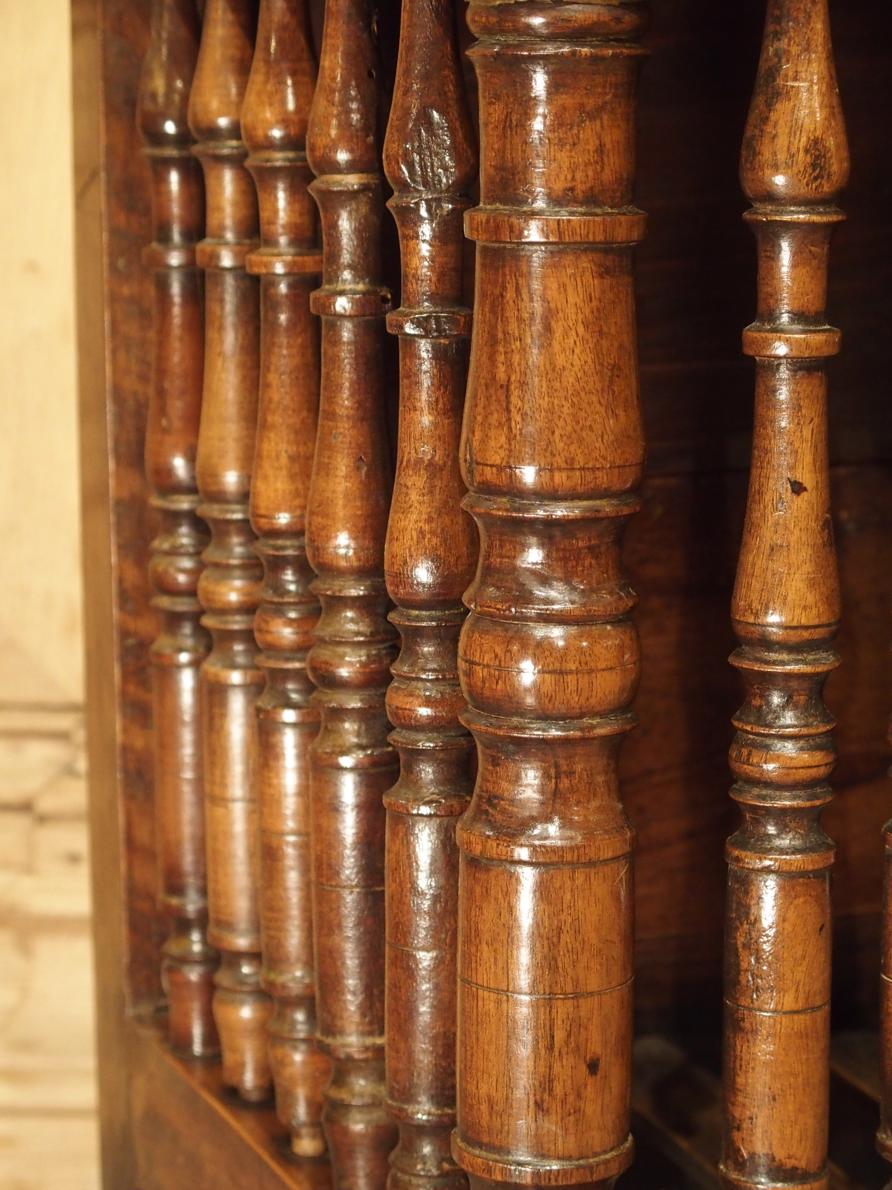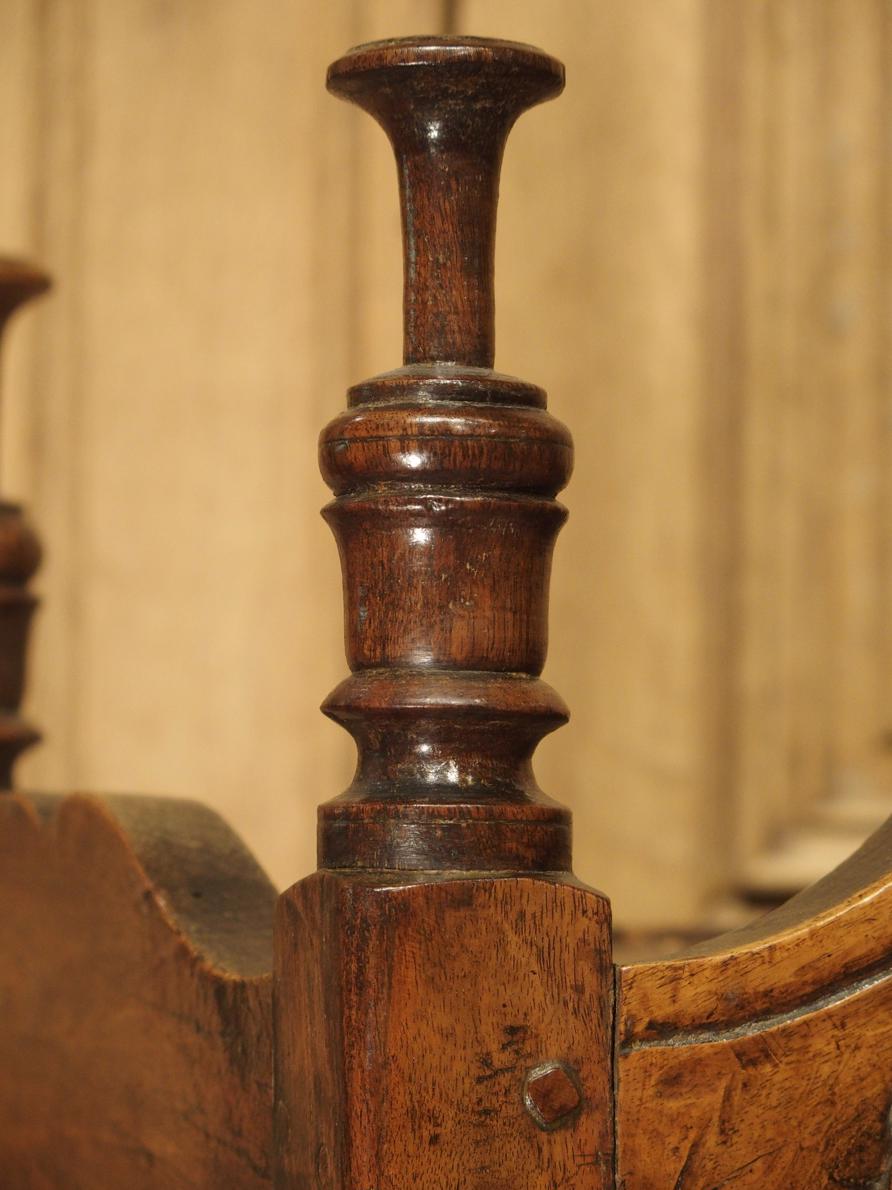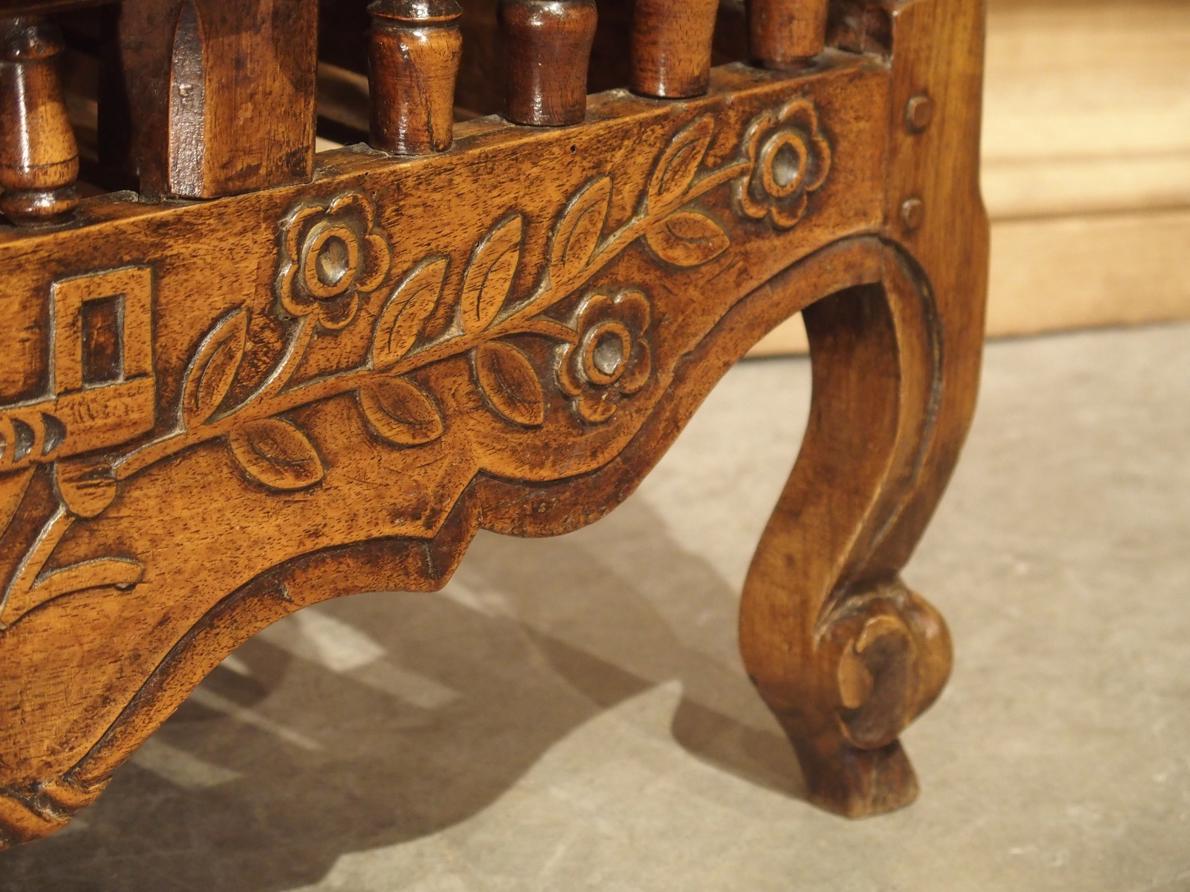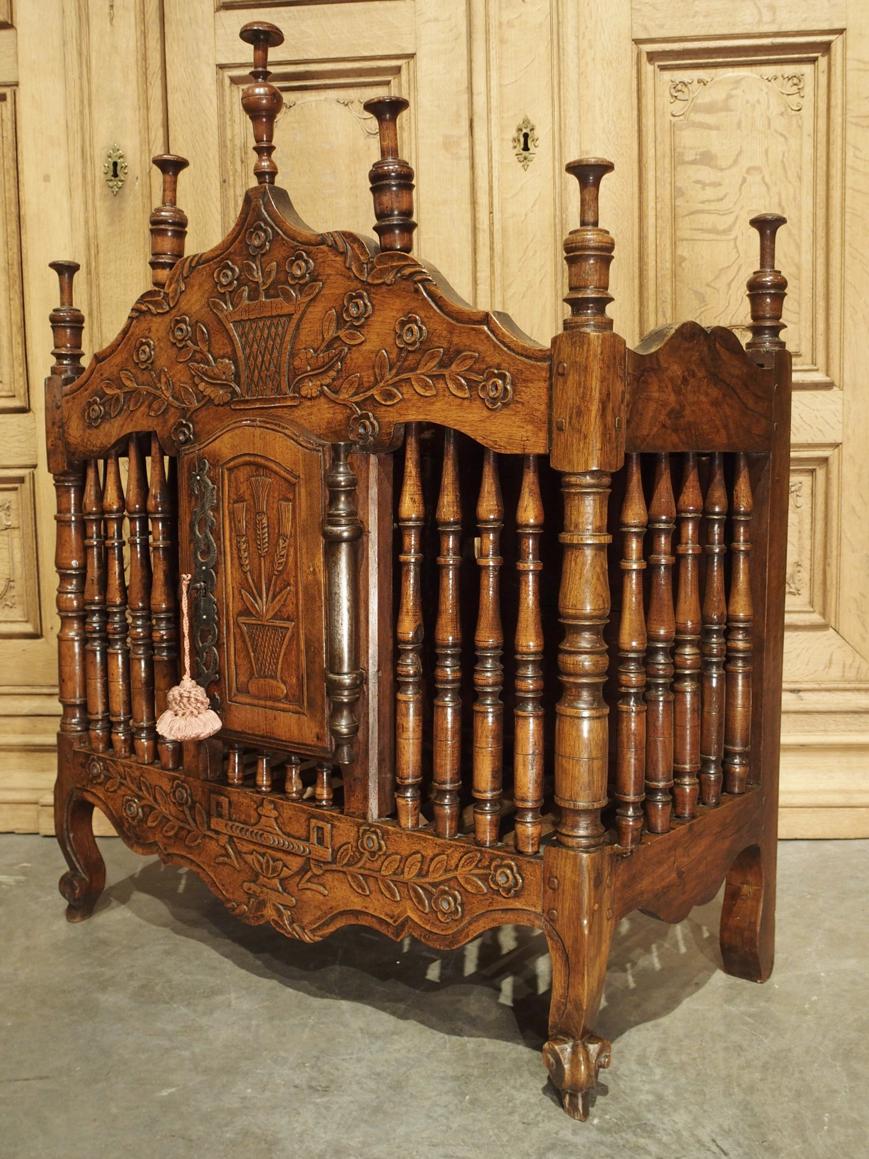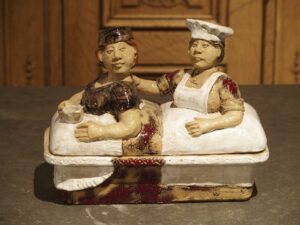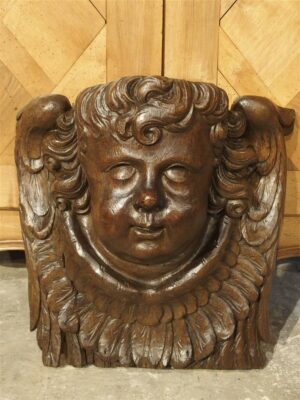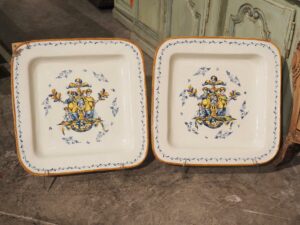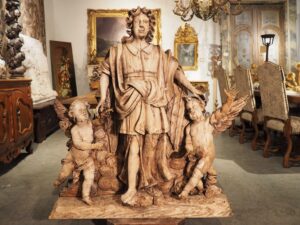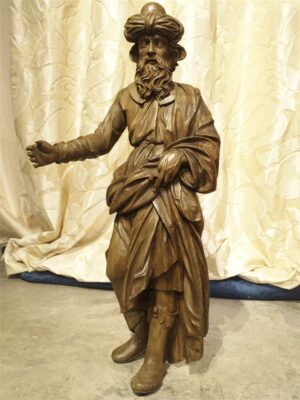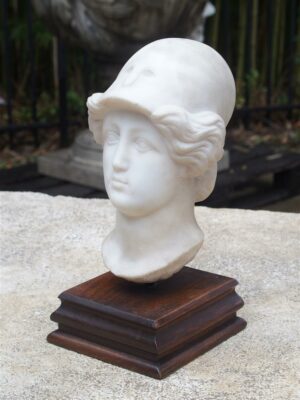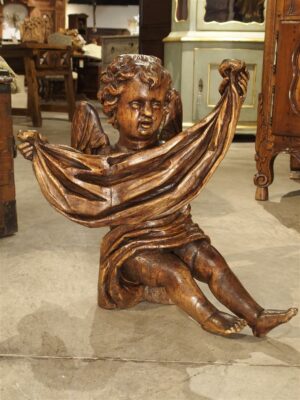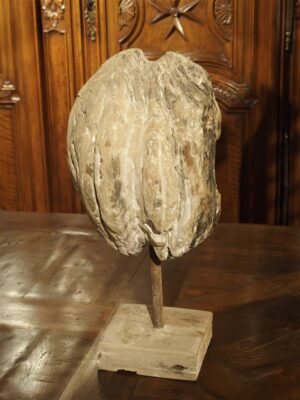From Provence, France, this beautiful walnut panetiere was hand-carved in the 1700’s. Panetieres were usually hung on walls and functioned as a decorative way keep bread safe as the dough dried. Starting in the 1800s, they were mostly used in houses as decorative accessories to store household items. Panetieres were produced throughout France, especially in Brittany and Provence, but it was the wood workers from Provence who created the most decorative and sought-after examples.
A shaped panel, adorned with a carving of a jardiniere with lozenge decor and holding stalks of wheat, lies next to a sinuous and pierced iron keyplate on the front door. The functioning lock is activated by an iron key with a rose-colored tassel. The door opens on a large iron hinge to reveal an 8 x 11 opening with an arched top. Another diapered jardiniere is carved into the top frieze, this time with three floret stalks and flowering vines emanating from the bottom of the planter. Likewise, the arbalete-shaped apron has a lidded urn with similar flowering vines.
Seven turned finials sit on top of the frieze, with the center one sitting the highest. The tapered necks and bulbous bodies aesthetically match the narrowly spaced balusters that connect the frieze to the apron. Square peg construction can be seen on the sides of the panetiere, although the slatted bottom is affixed to the closed back via mortise and tenon joints. The piece rests on shaped block feet in the back, while the front legs are classic Louis XV style, having volute scrolls just above the blocks. Originally, this panetiere would have sat directly on top of a petrin (French kneeding trough), but the legs became purely an aesthetic touch once the panetiere was hung on a wall.
This lovely 18th century walnut panetiere is classic country French. It has a nice warm color with a coat of French wax. The panetiere can be hung in many rooms of a house, such as a kitchen, breakfast room, or bedroom.
CONDITION: Very Good antique condition with fleabites and minor losses. Hole pierced into back at some point, likely for a display light. Minor rubs and nicks.


